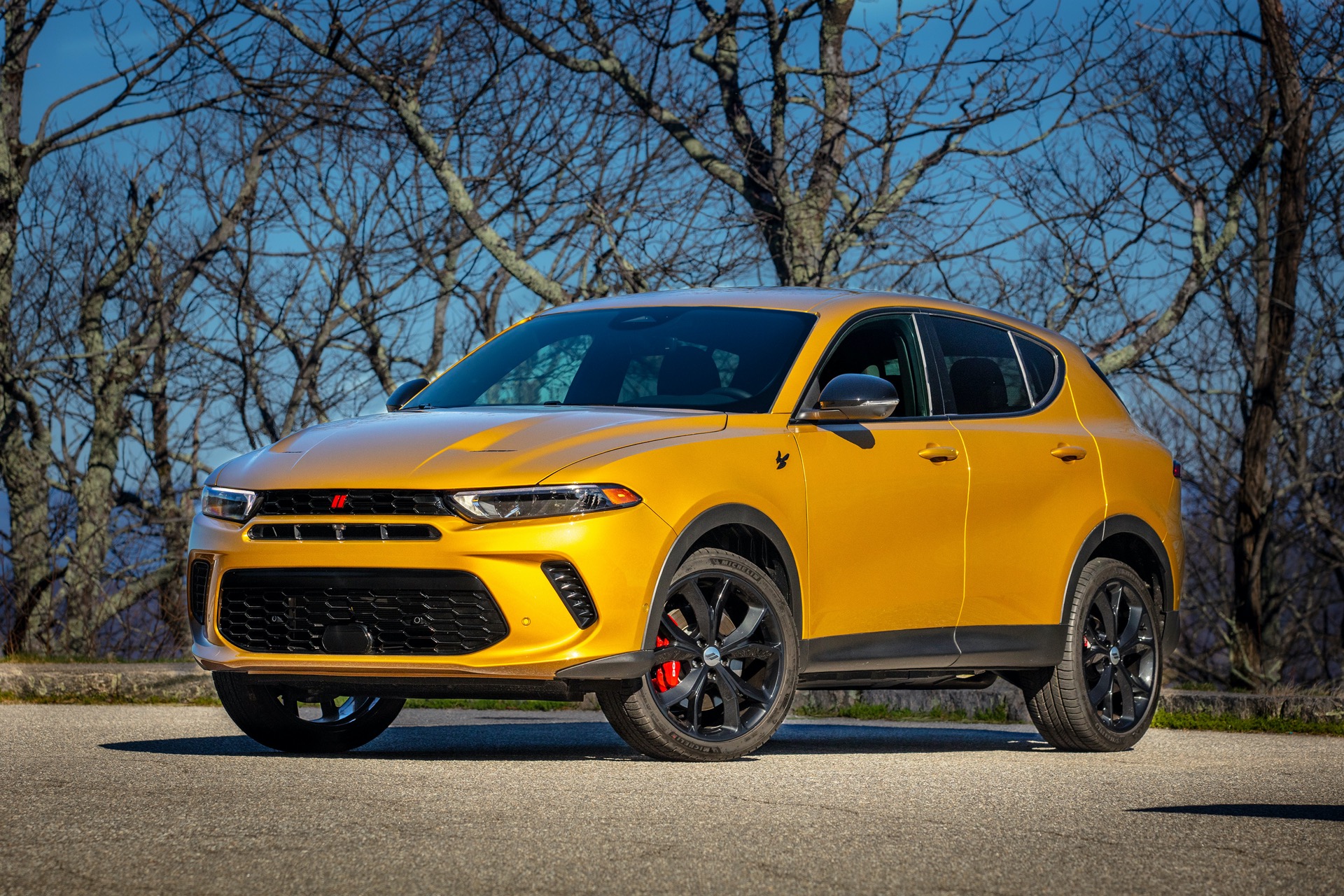
We give the Hornet a 7 for performance. All versions can reach 60 mph in 6.5 seconds or less, and have engaging, responsive handling.
All versions come with all-wheel drive.
How fast is the Dodge Hornet?
Two different powertrains power the two very different versions of the Hornet. In the Hornet GT, Dodge taps a 2.0-liter turbo-4 making 268 hp and 295 lb-ft of torque and pairs it with all-wheel drive and a 9-speed automatic. Dodge quotes a 0-60 mph time of 6.5 seconds and a top speed of 140 mph here.
While it makes good power, the Hornet GT’s transmission has been programmed for frustratingly slow responses in its default drive mode. It can take a stomp on the gas to trigger a downshift, which doesn’t bode well for its promised EPA ratings. Once it’s fired up, it’s entertaining and quick to respond—but everything gets better in its Sport mode, which lets it run higher toward redline and sharpens throttle response.
Sport mode also adds weight to its electric power steering. Though it weighs 3,715 pounds, the Hornet GT can thread through tightly wound roads with well-sorted responses.
The fully independent suspension uses MacPherson struts up front and a three-link rear suspension. It sits high, with its 8.0 inches of ground clearance, so the Hornet leans readily into corners, though available two-stage adjustable dampers iron that out, while still leaving the wheel travel the Hornet needs to handle humped roads.
How much can the Dodge Hornet tow?
Both models have a 2,000-pound tow rating.
How fast is the Dodge Hornet R/T?
It’s heavier by a few hundred pounds, but the Hornet R/T packs more power into its compact body—so it’s quicker.
The R/T swaps the GT’s 2.0-liter turbo-4 for a smaller 1.3-liter turbo-4 that straps on a 44-hp motor in front and a 121-hp motor that drives the rear wheels, all in combination with a 15.5-kwh battery that forms the cargo floor and lines the drive tunnel. All in concert, the Hornet R/T drivetrain churns out 288 hp and 383 lb-ft, good for a 0-60 mph time of 5.6 seconds and a top speed of 128 mph.
The distinct difference here is that the R/T can be run in a variety of modes. To tap the 30 miles or so of electric range, its EV-only “e-Save” mode runs in rear-wheel drive; it can use engine power to add battery charge, too. At the least efficient end of its driving spectrum, a switch into Sport mode and a pull on both shift paddles launches “PowerShot” mode, which drops an extra 30 hp into the system for 15 seconds, provided the battery has at least an 80% charge.
It’s a complex system, one in which the motors and battery mask the lack of torque in the small turbo-4. The R/T’s 6-speed automatic adapts to the constant shift of power sources, but it can telegraph the constantly changing sources and distribution of power, which lays down challenges to drivers. It’s difficult to extract power both quickly and smoothly.
Handling remains a virtue, though. The surefooted Hornet R/T doesn’t suffer much for the extra weight and the upgrade in wheels, from standard 18-inchers to optional 20-inchers. Usually that degrades ride quality noticeably, but with the available adaptive dampers, even the big-wheel Hornet R/T rides with refined motions. It’s helped by lower height: it sits 6.1 inches above the ground, nearly two inches lower than the GT.

